Do scorpion stings hurt. Understanding Scorpion Stings: Pain Mechanisms, Symptoms, and Treatment
Why are scorpion stings so painful. How does scorpion venom cause intense pain. What are the symptoms of a scorpion sting. How to treat scorpion stings effectively. When to seek medical attention for a scorpion sting.
The Science Behind Scorpion Sting Pain
Scorpion stings are notorious for their intense pain, but what makes them so excruciating? Recent research has shed light on the complex mechanisms behind scorpion venom and its pain-inducing properties.
A study published in Science Advances focused on a peptide called BmP01, previously identified as a key pain-causing component in scorpion venom. This peptide activates the TRPV1 pain signaling pathway in the brain. However, the small amount of BmP01 alone didn’t seem sufficient to explain the severe pain reported by sting victims.
The researchers discovered that the mildly acidic nature of scorpion venom plays a crucial role in amplifying pain signals. BmP01 binds to proton-binding sites on TRPV1, while the venom’s acidity donates protons that work synergistically with BmP01. This combination effectively “unlocks” the TRPV1 pathway, allowing for a significant amplification of pain signals.

The “One-Two Punch” Mechanism
How does this pain amplification work? The process can be described as a “one-two punch” approach:
- BmP01 binds to one of the two proton-binding sites on TRPV1
- A proton from the acidic venom binds to the other site
- Together, they strongly activate the nociceptive (pain-sensing) channel
This synergistic action explains why scorpion stings cause such intense pain despite the relatively small amount of venom injected.
Common Scorpion Species and Their Venom Potency
While all scorpion stings can be painful, the severity of symptoms can vary depending on the species. Some of the most common and dangerous scorpion species include:
- Arizona Bark Scorpion (Centruroides sculpturatus)
- Deathstalker Scorpion (Leiurus quinquestriatus)
- Fat-tailed Scorpion (Androctonus australis)
- Brazilian Yellow Scorpion (Tityus serrulatus)
The Arizona Bark Scorpion, native to the southwestern United States, is particularly noteworthy as it’s the only species in North America whose sting can be life-threatening to humans.

Venom Composition and Effects
Scorpion venom is a complex mixture of various compounds, including neurotoxins, cardiotoxins, and enzymes. The specific composition varies between species, but generally includes:
- Peptides that affect ion channels
- Enzymes that break down cellular structures
- Bioactive amines that influence various physiological processes
These components work together to produce the characteristic pain and other symptoms associated with scorpion stings.
Recognizing Scorpion Sting Symptoms
Identifying a scorpion sting quickly is crucial for proper treatment. The symptoms can vary in severity but typically include:
- Immediate, intense pain at the sting site
- Swelling and redness around the affected area
- Numbness or tingling sensations
- Difficulty breathing (in severe cases)
- Muscle twitching or spasms
- Nausea and vomiting
- Increased heart rate and blood pressure
In most cases, healthy adults will experience localized pain and discomfort. However, children, elderly individuals, and those with compromised immune systems are at higher risk for severe reactions.

Differentiating Scorpion Stings from Other Insect Bites
How can you tell if you’ve been stung by a scorpion rather than bitten by another insect? Here are some key differences:
- Scorpion stings typically cause immediate, intense pain
- The affected area may show two small puncture marks
- Symptoms tend to progress rapidly compared to most insect bites
- The presence of neurological symptoms (e.g., muscle twitching) is more common with scorpion stings
First Aid for Scorpion Stings
Knowing how to respond quickly and effectively to a scorpion sting can significantly reduce pain and prevent complications. Here’s a step-by-step guide for initial treatment:
- Remain calm and try to identify the scorpion if possible (but don’t risk another sting)
- Clean the sting site with soap and water
- Apply a cold compress to reduce pain and swelling
- Elevate the affected limb to minimize swelling
- Take over-the-counter pain relievers if needed
- Monitor for signs of a severe allergic reaction
It’s important to avoid certain actions that can worsen the situation or spread the venom:

- Don’t attempt to suck out the venom
- Avoid applying a tourniquet
- Don’t apply heat to the sting site
When to Seek Medical Attention
While most scorpion stings can be treated at home, certain situations require immediate medical care. Seek emergency treatment if:
- The victim is a child or elderly person
- Symptoms are severe or rapidly worsening
- There are signs of anaphylaxis (severe allergic reaction)
- The sting is from a known dangerous species (e.g., Arizona Bark Scorpion)
Medical Treatment Options for Scorpion Stings
In cases where medical attention is necessary, several treatment options are available:
- Pain management with stronger analgesics
- Administration of antivenin in severe cases
- Benzodiazepines to control muscle spasms
- Supportive care for severe symptoms (e.g., respiratory support)
Antivenin is particularly effective for stings from dangerous species like the Arizona Bark Scorpion. It can rapidly reverse severe symptoms and significantly reduce recovery time.
Long-term Effects and Complications
Are there any lasting effects from scorpion stings? In most cases, the symptoms resolve within a few days to a week. However, some individuals may experience:

- Persistent pain or numbness at the sting site
- Muscle weakness that takes time to fully resolve
- Anxiety or fear related to the traumatic experience
Severe stings, particularly in vulnerable individuals, can occasionally lead to more serious complications such as pancreatitis or cardiomyopathy. However, these are rare with prompt and appropriate treatment.
Preventing Scorpion Stings: Safety Measures and Precautions
The best way to deal with scorpion stings is to prevent them from happening in the first place. Here are some effective strategies to reduce the risk of encounters with scorpions:
- Seal cracks and crevices in your home’s foundation and walls
- Remove wood piles and debris from around your property
- Use weather stripping on doors and windows
- Wear closed-toe shoes and long pants when outdoors, especially at night
- Shake out shoes and clothing before wearing them
- Use gloves when working in the garden or moving outdoor objects
In scorpion-prone areas, consider these additional precautions:

- Install yellow or sodium vapor lights outdoors (less attractive to insects that scorpions prey on)
- Keep beds away from walls and don’t let bedding touch the floor
- Regularly inspect and treat your property with pet-safe scorpion repellents
Natural Predators and Biological Control
Can natural predators help control scorpion populations? While not a complete solution, encouraging the presence of certain animals can help reduce scorpion numbers:
- Owls and other nocturnal birds
- Chickens and guinea fowl
- Cats (though they should be kept indoors to avoid potential stings)
- Certain species of lizards and snakes
However, it’s important to maintain a balanced approach and not rely solely on biological control methods.
Scorpion Venom: Potential Medical Applications
Despite the pain and danger associated with scorpion stings, researchers are exploring potential medical applications for scorpion venom components. Some areas of investigation include:
- Cancer treatment: Certain venom peptides show promise in targeting cancer cells
- Pain management: Understanding pain mechanisms could lead to new analgesic drugs
- Antimicrobial agents: Some venom components exhibit potent antibacterial properties
- Autoimmune disease treatments: Venom-derived compounds may help modulate immune responses
These potential applications highlight the importance of conservation efforts for scorpion species, even as we work to prevent harmful encounters with humans.

Challenges in Scorpion Venom Research
What obstacles do researchers face in studying scorpion venom? Some key challenges include:
- Difficulty in obtaining sufficient quantities of venom for study
- Complexity of venom composition, with hundreds of different compounds
- Ethical considerations in animal testing of venom components
- Potential for unexpected side effects when using venom-derived drugs
Despite these challenges, the unique properties of scorpion venom continue to intrigue scientists and offer potential breakthroughs in various fields of medicine.
Global Distribution and Habitat of Dangerous Scorpion Species
Understanding the geographical distribution of dangerous scorpion species is crucial for travelers and residents in affected areas. While scorpions are found on every continent except Antarctica, the most dangerous species are concentrated in certain regions:
- North America: Southwestern United States and Northern Mexico
- South America: Brazil, Argentina, and Venezuela
- Africa: North Africa and parts of Sub-Saharan Africa
- Middle East: Israel, Jordan, and Saudi Arabia
- Asia: India and parts of Southeast Asia
Scorpions generally prefer warm, dry climates but can adapt to various environments. They are often found in:

- Deserts and semi-arid regions
- Tropical and subtropical forests
- Grasslands and savannas
- Rocky areas and caves
Climate Change and Scorpion Distribution
How might climate change affect scorpion populations and their distribution? Recent studies suggest several potential impacts:
- Expansion of suitable habitats for some species
- Changes in breeding patterns and life cycles
- Altered interactions with prey species and predators
- Possible increases in human-scorpion encounters as habitats shift
These changes underscore the importance of ongoing research and adaptation of public health strategies in affected regions.
Scorpion Behavior and Biology: Understanding the Sting
To fully comprehend scorpion stings, it’s essential to understand the biology and behavior of these arachnids. Scorpions use their stingers primarily for defense and to subdue prey. Key aspects of scorpion biology related to stinging include:
- Venom glands located in the telson (last segment of the tail)
- Ability to control the amount of venom injected
- Use of pincers (pedipalps) for prey capture and defense before resorting to stinging
- Nocturnal behavior, which increases the likelihood of accidental human encounters
Interestingly, scorpions fluoresce under ultraviolet light due to compounds in their exoskeleton. This property is often used by researchers and pest control professionals to locate scorpions at night.

Scorpion Sensory Systems
How do scorpions detect potential threats or prey? They rely on several sophisticated sensory systems:
- Pectines: Comb-like structures on the underside that detect ground vibrations and pheromones
- Trichobothria: Fine hairs on the pedipalps sensitive to air movements
- Eyes: Despite having up to six pairs of eyes, scorpions have poor vision and rely more on other senses
- Sensory hairs: Distributed across the body to detect touch and vibrations
Understanding these sensory systems can help in developing more effective prevention strategies and repellents.
Cultural Significance and Myths Surrounding Scorpions
Scorpions have played significant roles in various cultures throughout history, often symbolizing both danger and protection. Some cultural aspects include:
- Ancient Egyptian mythology: Associated with the goddess Serket, protector against venoms and poisons
- Zodiac sign: Scorpio, often depicted as a scorpion in astrological imagery
- Mayan culture: Scorpion symbols used in religious and ceremonial contexts
- Traditional medicine: Scorpion venom used in some forms of traditional Chinese medicine
Many myths and misconceptions about scorpions persist, such as the belief that smaller scorpions are more dangerous (in reality, venom potency is species-dependent, not size-dependent).
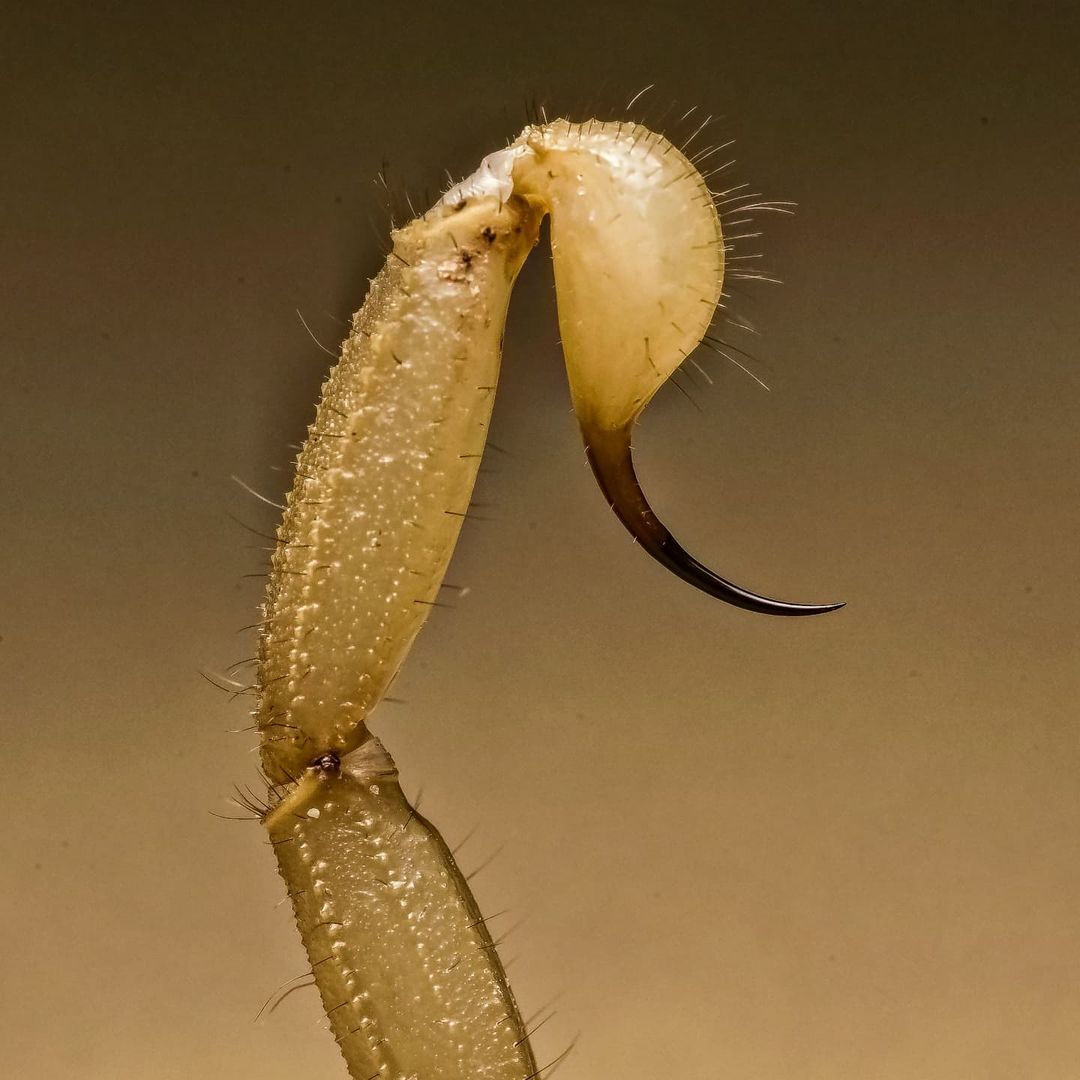
Scorpions in Popular Culture
How have scorpions influenced modern popular culture? They appear in various forms of media and art:
- Literature: Featured in novels, poetry, and folklore
- Film and television: Often depicted in horror and science fiction genres
- Video games: Scorpion characters or enemies in numerous games
- Music: Referenced in song lyrics and used as band names or album titles
While these portrayals often exaggerate the dangers of scorpions, they have contributed to public awareness and fascination with these creatures.
In conclusion, scorpion stings present a complex interplay of biology, chemistry, and human interaction. Understanding the mechanisms behind their painful effects, recognizing symptoms, and knowing proper treatment methods are crucial for anyone living in or traveling to scorpion-prone areas. While potentially dangerous, scorpions also offer intriguing possibilities for medical research and continue to play significant roles in various cultures worldwide. As we continue to study these fascinating creatures, we gain not only practical knowledge for safety but also insights into the intricate workings of nature and potential advancements in medical science.

Why scorpion stings are so painful
Mesobuthus martensii, also known as the Chinese golden scorpion. Credit: Dr. Shilong Yang
(Phys.org)—A combined team of researchers from the U.S. and China has figured out why scorpion stings are so painful. In their paper published on the open access site Science Advances, the team explains how scorpion venom containing a variety of toxins and is mildly acidic, causing a lot of pain.
Scorpions have stingers on the ends of their tails that pierce the skin of victims and inject venom. Prior research has suggested the purpose of the venom is not to kill, but to cause pain so that predators will leave them alone. In this new effort, the researchers studied the venom and revealed why it is so painful.
They focused on a peptide called BmP01, previously identified as the most likely pain-causing ingredient in the fluid mixture of more than 100 toxins. Prior research has shown that it activates a pain signal carrying pathway in the brain called TRPV1. But what has confused prior researchers is why the peptide causes so much pain—on its own, it would not seem that the minuscule amount would be able to cause much pain. To find out what might be boosting its pain potential, the researchers looked at other ingredients and characteristics of the venom.
But what has confused prior researchers is why the peptide causes so much pain—on its own, it would not seem that the minuscule amount would be able to cause much pain. To find out what might be boosting its pain potential, the researchers looked at other ingredients and characteristics of the venom.
They noticed that the venom was mildly acidic. Looking even closer, they found that BmP01 tends to bind with proton-binding sites on TRPV1. Also, more importantly, the acid in the venom resulted in donations of protons that worked with BmP01 to heighten the amount of pain it could cause. Together, the researchers found, the two were able to unlock the gate that led to the TRPV1 pathway, which allowed more pain signals to pass through. That meant that the pain signals generated by the introduction of BmP01 into the body were magnified due to the acidity of the venom.
A scorpion faces its natural enemy. Although legendary for their toxicity, scorpion stings are also known to be extremely painful, apparently to deter larger predators that cannot be overpowered.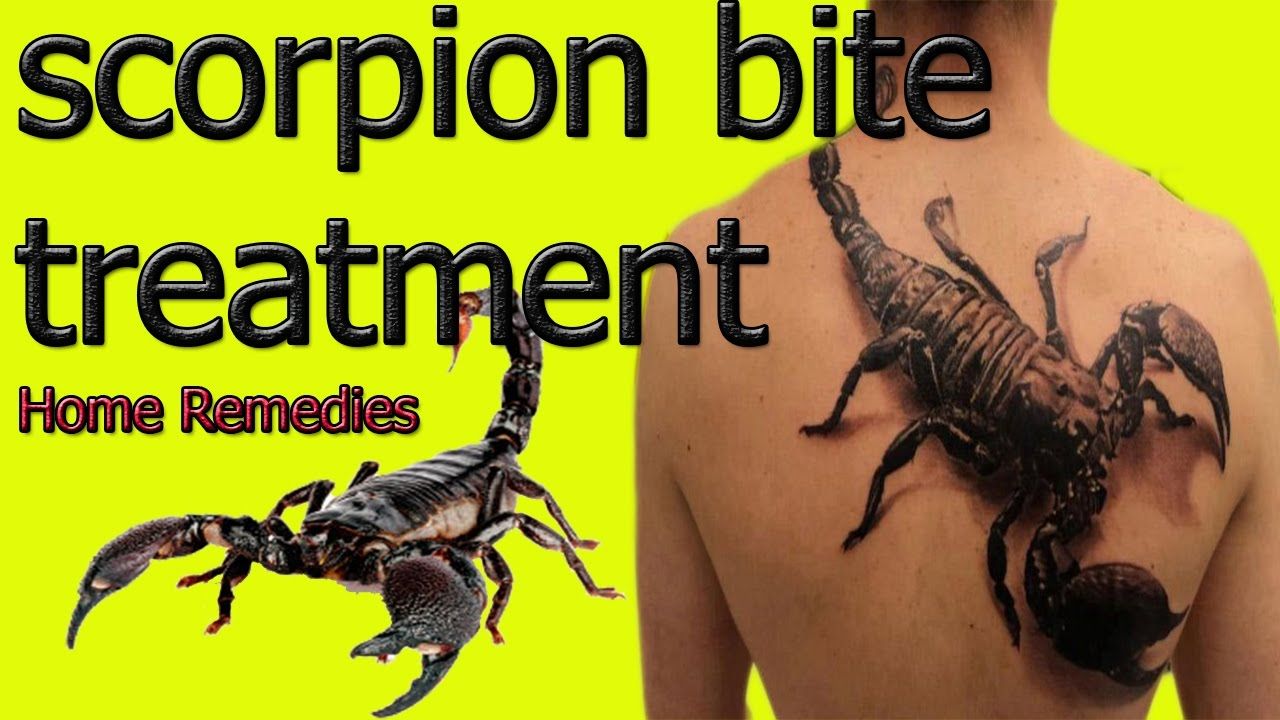 Credit: Dr. Shilong Yang
Credit: Dr. Shilong Yang
The researchers note that inflicting pain as a survival mechanism by the scorpion suggests that there may be more than one toxin in the venom that is being enhanced by donated protons, adding up to the very painful experience reported by victims.
More information:
Shilong Yang et al. A bimodal activation mechanism underlies scorpion toxin–induced pain, Science Advances (2017). DOI: 10.1126/sciadv.1700810 , advances.sciencemag.org/content/3/8/e1700810
Abstract
Venomous animals use peptide toxins for hunting and self-defense. To achieve these goals, toxins need to bind to their targets with high affinity due to the small amount that a single bite or sting can deliver. The scorpion toxin BmP01 is linked to sting-induced excruciating pain; however, the reported minimum concentrations for activating TRPV1 channel or inhibiting voltage-gated potassium (Kv) channels (both in the micromolar range) appear too high to be biologically relevant. We show that the effective concentration of BmP01 is highly pH-dependent—it increases by about 10-fold in inhibiting Kv channels upon a 1-U drop in pH but decreases more than 100-fold in activating TRPV1. Mechanistic investigation revealed that BmP01 binds to one of the two proton-binding sites on TRPV1 and, together with a proton, uses a one-two punch approach to strongly activate the nociceptive channel. Because most animal venoms are acidic, proton-facilitated synergistic action may represent a general strategy for maximizing toxin potency.
We show that the effective concentration of BmP01 is highly pH-dependent—it increases by about 10-fold in inhibiting Kv channels upon a 1-U drop in pH but decreases more than 100-fold in activating TRPV1. Mechanistic investigation revealed that BmP01 binds to one of the two proton-binding sites on TRPV1 and, together with a proton, uses a one-two punch approach to strongly activate the nociceptive channel. Because most animal venoms are acidic, proton-facilitated synergistic action may represent a general strategy for maximizing toxin potency.
© 2017 Phys.org
Citation:
Why scorpion stings are so painful (2017, August 3)
retrieved 27 June 2023
from https://phys.org/news/2017-08-scorpion-painful.html
This document is subject to copyright. Apart from any fair dealing for the purpose of private study or research, no
part may be reproduced without the written permission. The content is provided for information purposes only.
The content is provided for information purposes only.
How to Treat Scorpion Stings
Scorpions are one of the most frightening pests to stumble across, and there is a high concentration of them in Arizona and the surrounding states. If you live here, chances are you’ve come across a scorpion – even from a distance, and you certainly need to know how to treat scorpion stings. The difference in proper education and procedures can save you or someone you care about from significant pain, illness, or even potential death.
In this guide, we’ll cover topics including:
- How do you determine the severity of the scorpion sting?
- How do you treat scorpion stings?
- How long do scorpion stings last?
- Do I need to see a doctor for a scorpion sting?
- How do you identify scorpions?
If this information can keep your home safe and provide peace of mind for your family, then consider this quick study session on scorpion stings a great addition to your knowledge of pests.
Determine the Severity of the Scorpion Sting
Depending on the species of Scorpion that inflicted the sting, symptoms can range from slight discomfort to intense pain and muscle spasms. Some stings can be handled with simple methods such as icing the area and taking pain relievers.
With that said, if you or your loved ones are stung and experience more severe symptoms such as hives, wheezing, shortness of breath, or chest pain, you will need to seek medical assistance from a doctor immediately. It’s also always best to be safe than sorry, so when in doubt, check it out! If you’re even slightly questioning the severity of your bite, call 911 and go see a doctor right away.
How to Treat Scorpion Stings
most venomous Scorpion in all of the United States: the Arizona Bark Scorpion by a doctor near you or call local poison control immediately.
Otherwise, you can take the following measures to treat scorpion stings:
- Clean the sting with soap and water.

- Apply a cold compress to the injured area.
- Take over-the-counter pain relievers if needed.
- Monitor your injury and systemic conditions.
- Do not take sedatives if you have moderate symptoms.
Home remedies will be sufficient to treat mild scorpion stings most of the time. However, anytime someone has been stung qualifies as a high-alert situation requiring persistent monitoring.
How Long Do Scorpion Stings Last?
Scorpion stings typically last less than 24 hours, and their major symptoms should subside gradually. However, there can be numbness, tingling, and shock waves of minor symptoms that persist for 2 to 3 days.
If any of your symptoms continue longer than 24 hours, you may want to contact a doctor or seek medical attention.
Do I Need To See A Doctor For A Scorpion Sting?
If you begin to experience any of the more severe symptoms mentioned above or anything more than mild discomfort, seek medical assistance immediately.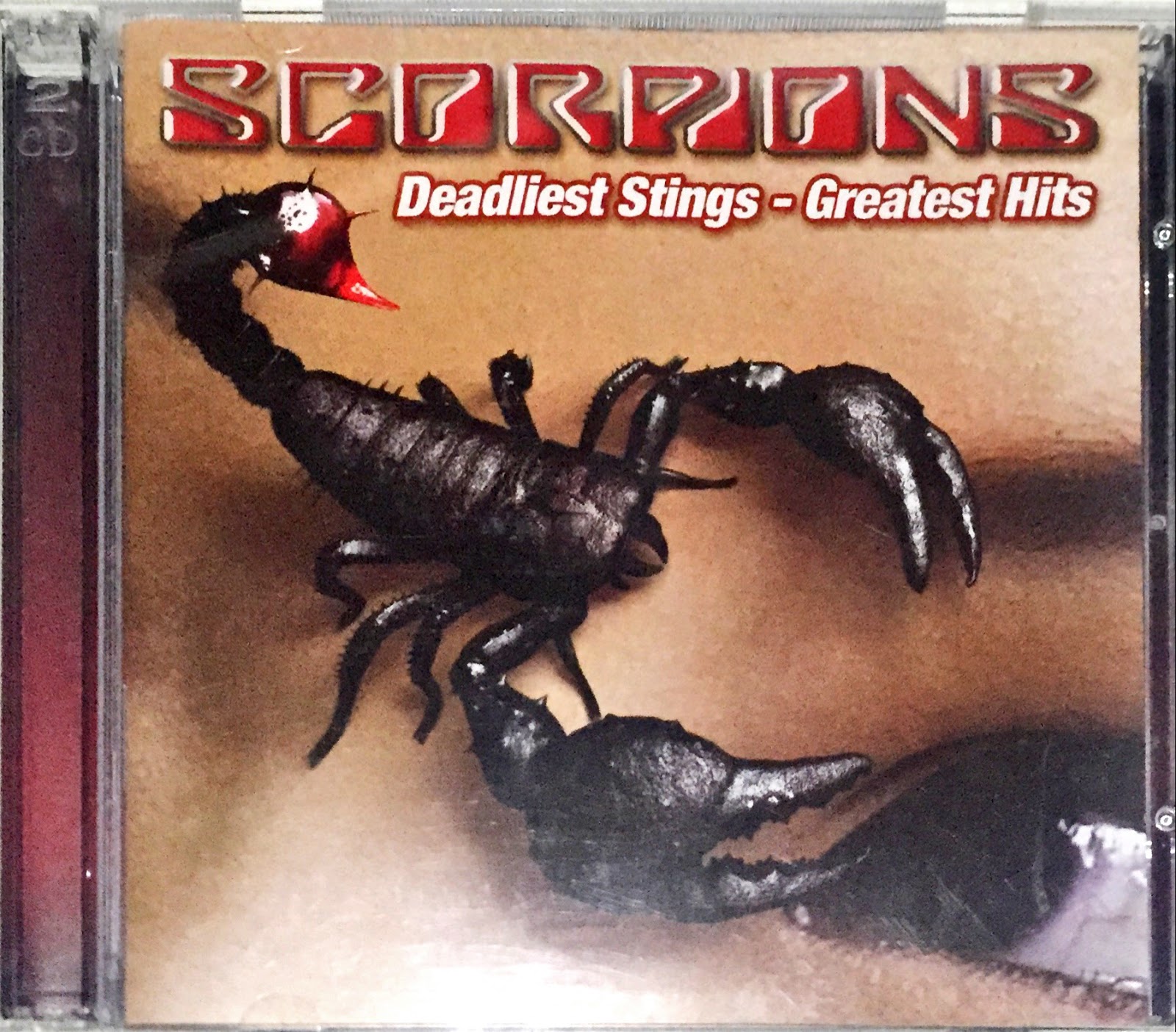 Most scorpion stings won’t require seeing a doctor, though the possibility is always there.
Most scorpion stings won’t require seeing a doctor, though the possibility is always there.
Seeing a doctor can open up the opportunity of using sedatives or antivenom to help treat the effects of the sting. There is also the chance that what you are experiencing could be an allergic reaction, in which case, only a medical professional would be able to diagnose it appropriately.
How to Identify Scorpions
There are three main scorpion species found in Arizona and other western states.
Common scorpions to watch for in Arizona are:
- Arizona Bark Scorpion
The Arizona Bark Scorpion is long and slender with a tan color. They are typically between 1.5 and 2.5 inches and glow under UV light, making them easy to spot in certain circumstances.
However, they are still great at hiding in shoes, garages, dark spaces, and any other inviting nooks and crannies.
- Giant Hairy Scorpion
Giant Hairy Scorpions in Arizona are the largest scorpions in the United States – and some of the scariest looking. They are covered in hair with dark markings and can be quite imposing if you come across one.
They are covered in hair with dark markings and can be quite imposing if you come across one.
- Arizona Stripetail Scorpion
The Arizona Stripetail Scorpion is the most common scorpion found in Arizona. These rock-dwelling pests are known to find their way into garages, homes, and swimming pools. The striped scorpion can grow up to 3 inches with yellowish-brown markings and a distinct striped pattern.
While scorpions are typically not aggressive towards humans unless provoked, they often get startled because they hide where we can’t see them, thus provoking them to sting you potentially.
Get the Best Scorpion Control in Arizona
At Insectek, our goal is to ensure your property and family are safe from all pests.
Scorpion stings rank highly on the list of pest-related incidents we work hard to prevent, and our team of expert technicians has decades of experience in scorpion pest control.
If you’re looking to get the best scorpion treatment in Arizona to protect your home, please reach out to us today.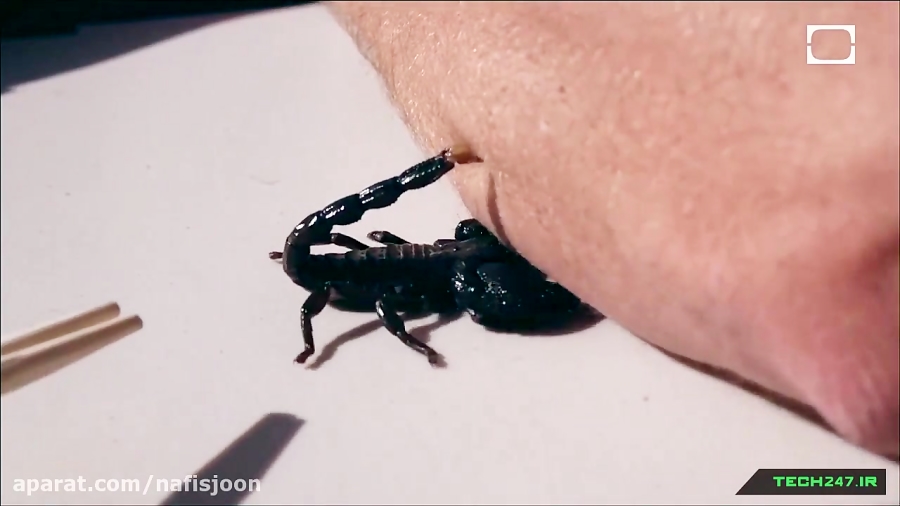
Published On: November 13, 2018
Updated On: February 22, 2022
interpretation of dreams about a scorpion according to the dream books of Miller, Vanga, Freud, Loff
In most religions and cultures, the scorpion is the personification of evil, cruelty and pain. And also a symbol of destructive self-criticism, since it is believed that this creature painfully stings not only others, but also itself. However, the tendency of scorpions to commit suicide is greatly exaggerated. Yes, he is a hunter, he is dangerous and poisonous. The sting of some species of scorpion is fatal to humans. But in some ways this representative of arachnids should be given credit. This is one of the most ancient creatures on our planet, preserved almost unchanged after 400 million years. Scorpions are not affected by radiation. He can go many months without food, slowing down his metabolism.
youtube.com/embed/WS8-k8RogA8?feature=oembed” allow=”accelerometer; autoplay; clipboard-write; encrypted-media; gyroscope; picture-in-picture; web-share” allowfullscreen=”” frameborder=”0″/>
But most people associate this creature not with superpowers of adaptation, but with cruelty and deceit. Therefore, the appearance of a scorpion in a dream, as a rule, does not bode well. Let’s see what the scorpion dreams of in the interpretation of different dream books.
Scorpion in Miller’s dream book
I dreamed of a scorpion – be careful, this is a danger from familiar people. According to Miller’s dream book, such a dream warns that there is an ill-wisher in your environment who disguises himself as a friend, but is preparing to harm you. If you can figure it out before he puts his cunning plan into action, you can avoid being hit. Hope for this is given by a dream in which a scorpion tried to sting you, but could not. And if he managed to do this, then, most likely, a “stab in the back” is expected.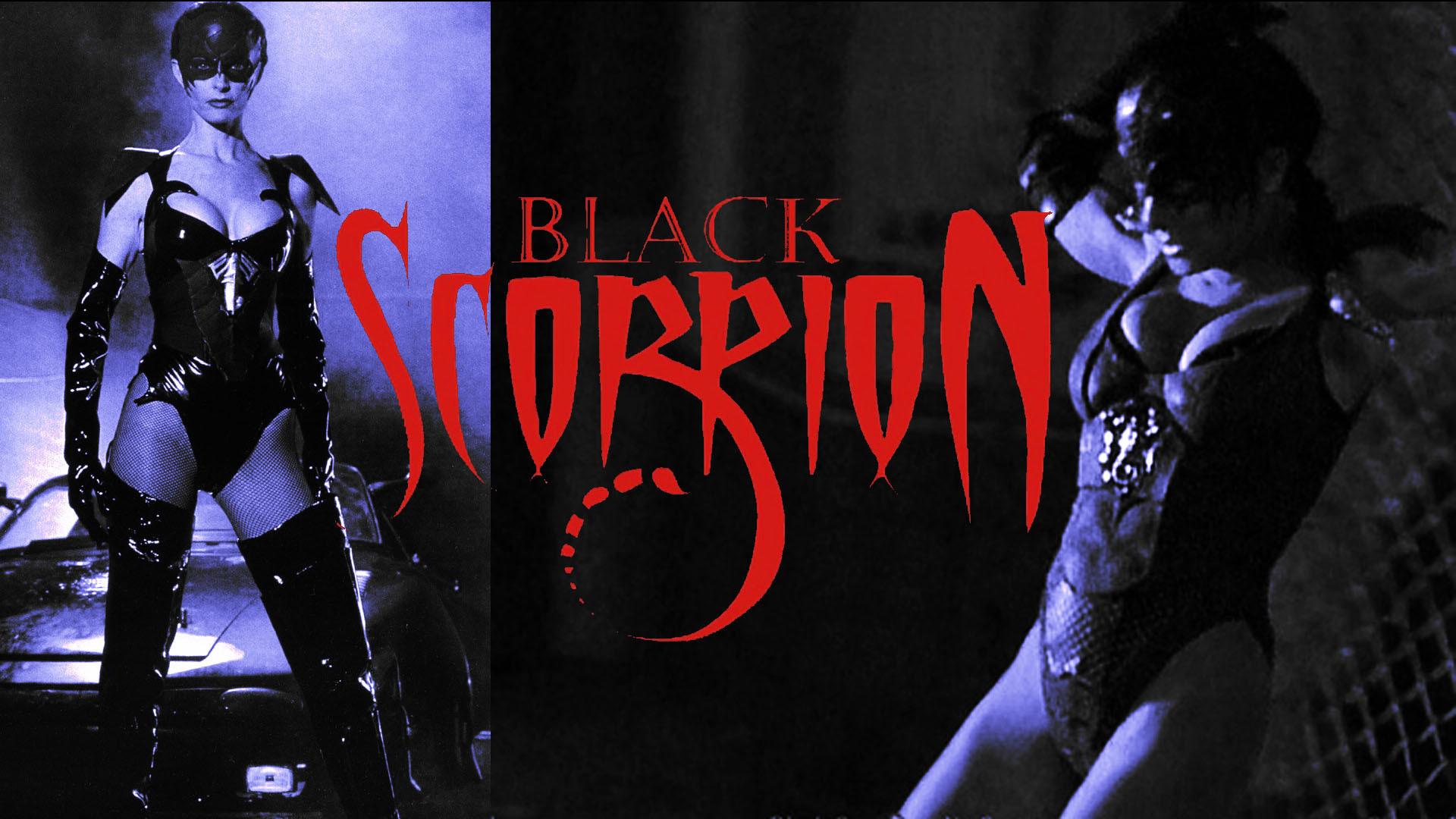
Scorpion in Freud’s dream book
A woman who dreamed that she was stung by a scorpion may become a victim of violence and cruelty from a sexual partner in bed. Such a dream warns: be selective and careful in your choice. Or avoid new acquaintances in the near future and take your time with intimacy.
If a man saw a scorpion in a dream, he seemed to look into a mirror – this man himself is prone to violence, sadism. Most likely, he will harm someone, but he himself will soon pay for it.
A dream in which a scorpion lives in a terrarium in your house speaks about hidden complexes and aggression towards the opposite sex.
Scorpion in Loff’s dream book
David Loff also believes that a scorpion attacking in a dream is a warning about an insidious, two-faced person in your environment who is waiting for an opportunity to compromise you. Someone who often complains about life and blames himself for everything is not worth believing. Most likely, it is he who is ready to “sting” you when you let him get closer to you. But in Loff’s dream book there are also positive interpretations of dreams in which a scorpion is present:
Most likely, it is he who is ready to “sting” you when you let him get closer to you. But in Loff’s dream book there are also positive interpretations of dreams in which a scorpion is present:
large black scorpion – to the realization of grandiose plans;
eating a dish of black scorpions – to a good change in life.
Scorpion in the dream book of Nostradamus
In the dream book of the famous soothsayer, the scorpion is the personification of deceit, revenge and power. Explanations are similar to other interpretations of dreams:
scorpion sting – a threat to your reputation, you can become a victim of false rumors;
big black scorpion – big changes in life;
there is a dish of scorpions – to meet a person who will make your life brighter;
if in a dream you kill a scorpion, you will be able to prevent a conspiracy that ill-wishers are preparing against you.
Scorpion in Vanga’s dream book
Scorpion in a dream is a warning about danger. The clairvoyant dream book recommends that after such a warning, you reconsider your plans for the foreseeable future and abandon risky business. Devote more time to family and children.
And if you dreamed of a lot of scorpions in one place, then you should also refrain from alcohol in the coming days, otherwise many problems may overtake you.
Scorpion in Hasse’s dream book
Medium Miss Hasse believed that a person who saw a scorpion in a dream would be punished for his misdeeds.
Like other interpreters, she also believes that such a dream warns of two-faced people in your environment – they can simply pretend to be friends, but, having recognized your weaknesses, strike. Be careful in dealing with people and do not trust everyone with your secrets, the dream in which you saw a scorpion signals.
Scorpion in Tsvetkov’s dream book
In the dream book of a Russian scientist, attention is paid to the color of the scorpion that he dreamed about. Yellow – for money, red – for debts, white – for good luck in business.
Yellow – for money, red – for debts, white – for good luck in business.
Scorpion in the dream book of Simeon Prozorov
A scorpion sting in a dream means an unexpected circumstance that will destroy your plans in reality. And if you dream that you crushed a scorpion, then your enemies will be defeated.
In most religions and cultures, the scorpion is the personification of evil, cruelty and pain. Photo: pixabay.com
Scorpio in the Modern Dream Book
Modern dream book, as if generalizing more ancient interpretations of the appearance of a scorpion in a dream, warns that there are people around you who can hurt you, who will stop at nothing, competing with you in work or personal life. Moreover, even people you trust can take up arms against you.
Be careful when choosing friends and acquaintances, and do not rush to trust a new person.
If you saw a scorpion in the water, it means that it’s time to let go of your past with all the problems and traumas and move forward.
Expert comments
Aigul Grand, psychologist:
— Any dream should be interpreted from what associations it evokes in you. If pleasant, the dream symbolizes positive events and news, and if negative, it warns that you need to be more careful and careful.
A dream is a harbinger of what a person feels but may not yet be aware of.
If there is a feeling of danger in life, a scorpion is dreamed as a symbol of deceit (the scorpion stings unexpectedly), death (the poison is toxic), pain (the bite causes these sensations).
Aigul GrandPsychologist
But any dream can be reprogrammed. If you direct it in a positive direction, give a positive attitude that the scorpion dreams of goodness, wealth, prosperity, then it will be so. Pay attention to the ancient images of priests, to ancient temple practices – this insect has always been assigned a high role, and the symbol of a scorpion in a person spoke of a high status and belonging to priests or nobility.
In interpreting sleep, it is important to take into account a person’s personal associations. Any insects, except for a scorpion, can be unpleasant – then its image in a dream will be a good sign. Perhaps some travel story was connected with him, or the one who saw the scorpion in a dream was born in this zodiac sign.
The interpretation of any dream depends on the mood. Even if you treat the image that means bad news in dream books as good advice to be more careful and careful, accept the message with gratitude, then such a dream will only bode well.
Oleg Dolgitsky, medical psychologist, forensic psychologist:
– Scorpio is the symbol of the Magician. When dream books write that a scorpion is an unkind sign, they express only one of its shadow aspects – unforeseen and negative consequences.
Indeed, if you dream of a scorpion, this may mean that a person is afraid of something unpredictable.
Oleg DolgitskyMedical psychologist
Another aspect of the Magician (scorpion) is the desire to know the fundamental laws of the universe, to understand how the world works and what drives it. Therefore, on the other hand, a scorpion in a dream may indicate a desire to make your dreams come true. It can also talk about finding mutually beneficial resources.
At the same time, it is important to separate the scorpion as an archetypal symbol from the real image of the scorpion, which a person could see a few days before the dream. So, if there was an experience of communicating with a scorpion or something that reminded of him, then it is the scorpion that can be dreamed of. As Freud said, sometimes a cigar is just a cigar.
FIC InBYuM
The fauna of centipedes Karadag remains little studied to this day. The vast majority of species living in the Crimea are small in size and, due to their secretive lifestyle, are hardly noticeable. They live in damp places: in the soil, under stones, under bark and in rotting tree trunks. Only a few large representatives of this class of invertebrates are able to attract the attention of tourists. In human dwellings, one can often find a rather large – matchbox-sized centipede with a fringe of long and thin legs. Her elongated tender body seems to be suspended on curved legs-supports. It’s about Common Flycatcher , or Scootiger is by far one of the most charming representatives of the vast subclass of Centipedes. Flycatchers’ homes are attracted by an abundance of insects. This peculiar animal leads the life of an ambush predator, less often actively looking for prey. Scootigers, destroying a large number of flies, mosquitoes and other insects, the neighborhood of which is not always pleasant, are useful guests in dwellings. For people, this cute animal is not at all dangerous.
They live in damp places: in the soil, under stones, under bark and in rotting tree trunks. Only a few large representatives of this class of invertebrates are able to attract the attention of tourists. In human dwellings, one can often find a rather large – matchbox-sized centipede with a fringe of long and thin legs. Her elongated tender body seems to be suspended on curved legs-supports. It’s about Common Flycatcher , or Scootiger is by far one of the most charming representatives of the vast subclass of Centipedes. Flycatchers’ homes are attracted by an abundance of insects. This peculiar animal leads the life of an ambush predator, less often actively looking for prey. Scootigers, destroying a large number of flies, mosquitoes and other insects, the neighborhood of which is not always pleasant, are useful guests in dwellings. For people, this cute animal is not at all dangerous.
Common flycatcher with prey. Photo by V.S. Marchenko
Under the stones lying on the damp soil, whitish or ivory-colored very long and thin centipedes can be found.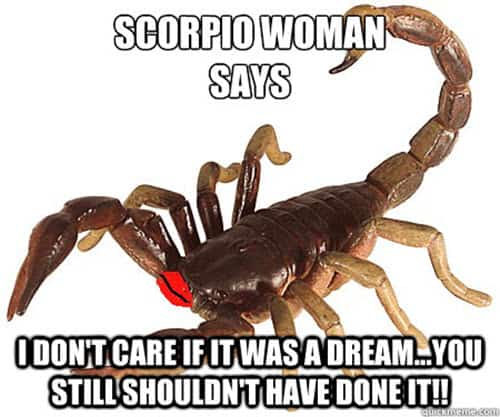 Wriggling like snakes, they will immediately try to hide from the light and go into the soil. These are geophiles – earthworm eaters. Their frequent neighbors are medium-sized (several centimeters in length) brown drupes . ringed scolopendra looks like harmless drupes , which differs from them in its impressive size. There are specimens over 20 cm long! Scolopendra is poisonous, numerous and almost ubiquitous. It is active mainly at night, but in cloudy weather it appears on the surface during the day. Centipedes are excellent climbers, climbing rocks and treetops, penetrating through windows into houses. Thus, it poses a serious danger to the careless tourist sleeping in the open air. Cases of human bites by scolopendra in the Crimea are not at all uncommon. The poison is injected with powerful claw-like jaws. It is impossible to die from the bite of this centipede, but it will cause a lot of trouble. Burning pain is felt at the injection site, redness and swelling occur, and in severe cases, the temperature rises.
Wriggling like snakes, they will immediately try to hide from the light and go into the soil. These are geophiles – earthworm eaters. Their frequent neighbors are medium-sized (several centimeters in length) brown drupes . ringed scolopendra looks like harmless drupes , which differs from them in its impressive size. There are specimens over 20 cm long! Scolopendra is poisonous, numerous and almost ubiquitous. It is active mainly at night, but in cloudy weather it appears on the surface during the day. Centipedes are excellent climbers, climbing rocks and treetops, penetrating through windows into houses. Thus, it poses a serious danger to the careless tourist sleeping in the open air. Cases of human bites by scolopendra in the Crimea are not at all uncommon. The poison is injected with powerful claw-like jaws. It is impossible to die from the bite of this centipede, but it will cause a lot of trouble. Burning pain is felt at the injection site, redness and swelling occur, and in severe cases, the temperature rises. It is interesting that this unsympathetic animal, the sudden appearance of which causes a feeling of chills even in a familiar person, is capable of touching care for offspring: centipedes carefully incubate and protect egg laying from encroachments of predators until the young animals appear. Centipedes feed mainly on insects, but they are able to cope with both bold lizards and newborn snakes.
It is interesting that this unsympathetic animal, the sudden appearance of which causes a feeling of chills even in a familiar person, is capable of touching care for offspring: centipedes carefully incubate and protect egg laying from encroachments of predators until the young animals appear. Centipedes feed mainly on insects, but they are able to cope with both bold lizards and newborn snakes.
Scolopendra is a dangerous centipede. Photo by N.M. Kovblyuk
Scolopendra is the only large centipede of Karadag. The large (pencil-thick) bipedal centipede, numerous on the southern coast of Crimea – fragrant nodule – is no longer found at the eastern limit of the Crimean Mountains, and the easternmost point of its range is Cape Alchak, which closes Sudak Bay from the west. These kivsyaks were repeatedly brought to Karadag for experimental purposes, but for some reason they do not take root here.
Arachnids or arachnids are a very numerous class of invertebrates. On Karadag, this ancient group is represented by several detachments. Detachments of scorpions and salpugs (the latter are also called camel spiders) in the Crimea are represented by a single species each. The peculiar appearance and unusual behavior of these animals have attracted the attention of man since ancient times. They are mentioned in the Book of the Dead, in Sumerian and ancient Greek myths and chronicles. In Egypt, scorpions were depicted on tombs and monuments. Aristotle wrote that in some countries scorpion stings are harmless, in others they bring inevitable death. In this sense, Crimea is a calm region. In piles of stones and under plaster on old buildings you will occasionally meet a small Crimean scorpion . Its total length with the “tail” does not exceed 4.5 cm, and the poisonous spike of its telson (the so-called bulbous segment at the end of the abdomen, where the poisonous glands are located) is not able to pierce the rough skin of the sole of a person’s foot.
On Karadag, this ancient group is represented by several detachments. Detachments of scorpions and salpugs (the latter are also called camel spiders) in the Crimea are represented by a single species each. The peculiar appearance and unusual behavior of these animals have attracted the attention of man since ancient times. They are mentioned in the Book of the Dead, in Sumerian and ancient Greek myths and chronicles. In Egypt, scorpions were depicted on tombs and monuments. Aristotle wrote that in some countries scorpion stings are harmless, in others they bring inevitable death. In this sense, Crimea is a calm region. In piles of stones and under plaster on old buildings you will occasionally meet a small Crimean scorpion . Its total length with the “tail” does not exceed 4.5 cm, and the poisonous spike of its telson (the so-called bulbous segment at the end of the abdomen, where the poisonous glands are located) is not able to pierce the rough skin of the sole of a person’s foot.
The cuticle of a Crimean scorpion fluoresces under ultraviolet light. Photo by A.A. Nadolny and O.V. Kukushkina
In the Karadag Reserve, the scorpion is known from single finds, but is relatively common within the boundaries of nearby cities – Sudak and Feodosia. Such a craving of the scorpion for the ancient port centers is quite understandable: quite recently it turned out that the scorpion was brought to the Crimea from one of the islands of the southern Aegean Sea, apparently, in the era of the ancient Greek colonization of Taurica. That’s just in the Crimea, scientists found it much earlier than at home. That is why it is called – Crimean. A scorpion also arrived at Karadag as a “hare” – most likely from Sevastopol, along with laboratory glassware from the Institute of Biology of the Southern Seas (in the basements of the first marine aquarium organized by A.O. Kovalevsky, scorpions are found in abundance – under plaster on the walls). This timid animal is active at night and feeds on flies and other small invertebrates, which it finds in the crevices of walls and rock crevices. An interesting feature of the biology of scorpions is the protection of offspring: before the first molt, the female carries her babies on her back. And during this time, do not approach her!
An interesting feature of the biology of scorpions is the protection of offspring: before the first molt, the female carries her babies on her back. And during this time, do not approach her!
Another original inhabitant of Karadag is common salpuga , or phalanx , – the largest arachnid of the Crimean fauna. Together with the limbs, it reaches the size of a tea saucer. Salpuga is not numerous, lives in rocky areas, and it is not easy to find it. But on warm summer evenings, they meet under the lanterns in the village of the reserve, where they hunt for small animals. Despite its solid size, creepy appearance (which is exacerbated by exceptional hairiness) and the presence of huge pincer-shaped mandibles-chelicerae, the salpuga is not capable of harming a person. This is probably why the behavior of the salpuga is often defiantly aggressive. The disturbed animal sways on long legs, attacks the offender and, moving its powerful jaws, without exaggeration, emits a “gnashing of teeth”. Do not pay attention to these advances – there are no poisonous glands in the salpuga. It is not necessary, however, for the sake of experiment to try to tease her. The phalanges, being very voracious, on occasion do not disdain carrion and, if bitten, can bring an infection into the wound.
Do not pay attention to these advances – there are no poisonous glands in the salpuga. It is not necessary, however, for the sake of experiment to try to tease her. The phalanges, being very voracious, on occasion do not disdain carrion and, if bitten, can bring an infection into the wound.
During the day hairy salpugs can be found under large stones. Photo by L.V. Znamenskoy
Another arachnid would not deserve a mention in the guidebook if it did not catch the eye so often. We are talking about false scorpion book . This tiny animal, no larger than 5 mm in size, outwardly really looks extremely similar to a real scorpion, only devoid of a “tail” with a poisonous sting. On Karadag , false scorpions come across not only in nature, but also between the yellowed pages of the folios of the library of T.I. Vyazemsky. They feed on the smallest insects. Thus, they are a kind of little guardians of a unique collection of books. An interesting feature of false scorpions is their tendency to use large flies and beetles as a vehicle. Clinging to the legs of their winged counterparts with claws, they travel widely around the world.
Clinging to the legs of their winged counterparts with claws, they travel widely around the world.
The greatest diversity is observed in the order of spiders. At Karadag today there are almost 340 species of them. The insufficient study of the fauna of the Karadag spiders is evidenced by the fact that species new to science are still being described from here. In 2009, a large (over 1 cm long) representative of the family wolf spiders was found in the Karadag Reserve, which is so different from all its fellows that it even had to be isolated into an independent genus – deliriosis . This arthropod, unknown to science, lived in a ravine trampled down by generations of naturalists near the beginning of the ecological path and, in general, did not hide from anyone …
Now let’s talk about the most prominent representatives of the many-sided detachment of spiders inhabiting Karadag. On the rocky slopes, in the cushions of prickly astragalus, one can see elongated web tubes that go deep into the bush – into the plexus of prickly twigs. This is the trapping net of a fairly large funnelworm spider . If you look closely, then in the depths of the funnel, a light gray body of the host is noticeable. In heaps of rocks near the sea and on the branches of trees, there are often huge, with a small walnut orb-weaving spiders , or cross-webs . Their networks have a “classic” wheel shape. While walking through the reserve, it is easy to see that they are so careless that they often braid paths with their nets. Large orb-weaving spiders are numerous in the steppe areas: striped, like a wasp, Bruennich’s argiope , with a bullet-shaped abdomen, and silver, with scalloped outgrowths on a flattened abdomen, Lobular argiope .
This is the trapping net of a fairly large funnelworm spider . If you look closely, then in the depths of the funnel, a light gray body of the host is noticeable. In heaps of rocks near the sea and on the branches of trees, there are often huge, with a small walnut orb-weaving spiders , or cross-webs . Their networks have a “classic” wheel shape. While walking through the reserve, it is easy to see that they are so careless that they often braid paths with their nets. Large orb-weaving spiders are numerous in the steppe areas: striped, like a wasp, Bruennich’s argiope , with a bullet-shaped abdomen, and silver, with scalloped outgrowths on a flattened abdomen, Lobular argiope .
Argiope Bruennikha is one of the most notable spiders of Karadag. Photo by L.V. Znamenskoy
In the grass layer, small crab spiders , or sidewalkers , with a short, angular abdomen and disproportionately long forelimbs, are very common. Hiding in the center of a flower, they lie in wait for insects that come to feast on nectar. For the purpose of camouflage, some crab spiders change their coloration to match their surroundings. All of these spider species have adopted a strategy of ambush predators. However, many of their other brethren are skilled trackers, actively hunting for prey. Tarantulas and stray wolf spiders reach relatively large sizes, usually hunt on the ground and are excellent sprinters. Jumping spiders take caution, sneaking up on prey stealthily and making a lightning-fast throw at the last moment from a distance that seems implausibly huge in comparison with the more than modest size of the most furry hunter. In summer, more often than other jumpers a small (less than 1 cm) spider catches the eye phylaeus with scarlet or blood-red belly. He hunts in the most inferno – on the rocks heated by the sun. Some horses are capable of “hunting cunning”: they do not approach the noticed victim “head on”, risking being detected, but carefully bypass it and attack from behind.
Hiding in the center of a flower, they lie in wait for insects that come to feast on nectar. For the purpose of camouflage, some crab spiders change their coloration to match their surroundings. All of these spider species have adopted a strategy of ambush predators. However, many of their other brethren are skilled trackers, actively hunting for prey. Tarantulas and stray wolf spiders reach relatively large sizes, usually hunt on the ground and are excellent sprinters. Jumping spiders take caution, sneaking up on prey stealthily and making a lightning-fast throw at the last moment from a distance that seems implausibly huge in comparison with the more than modest size of the most furry hunter. In summer, more often than other jumpers a small (less than 1 cm) spider catches the eye phylaeus with scarlet or blood-red belly. He hunts in the most inferno – on the rocks heated by the sun. Some horses are capable of “hunting cunning”: they do not approach the noticed victim “head on”, risking being detected, but carefully bypass it and attack from behind. Some species are also capable of a more meaningful maneuver: when they see a prey, they can not only go around it from behind, but also choose a good ambush place at the top, on a stone or twig, and then unexpectedly jump directly onto the prey.
Some species are also capable of a more meaningful maneuver: when they see a prey, they can not only go around it from behind, but also choose a good ambush place at the top, on a stone or twig, and then unexpectedly jump directly onto the prey.
Smaller spiders of other species sometimes become prey for jumping spiders. Photo by L.V. Znamenskoy
Long-legged anemic house spiders are often found on the ceilings of houses, which are often called harvesters , mistakenly giving them the name of a completely different animal. Sometimes a large clumsy domestic tegenaria can visit, the paws of which are dotted with long soft hairs. These are useful neighbors that save us from annoying insects.
A female wolf spider with offspring on her back appears to be wearing a black fur coat. Photo by L.V. Znamenskoy
Several species of spiders living in Karadag are dangerous for humans. All of them have powerful mandibles that easily pierce the skin. Among them are large and mobile South Russian tarantula , spider eresus , the females of which have a massive build and reach a size of 2-3 cm, as well as a slender and nondescript in appearance, but with huge chelicerae spider chirakant , often visiting houses. The bites of these spiders are painful, cause a strong local reaction and a feverish condition that lasts for several days. The bite of the spider atypus , a representative of an ancient and primitive family that is closely related to tropical tarantula spiders, can also turn into trouble. However, all the listed species poisonous to humans are rare, and meeting them during a short excursion around Karadag is almost unbelievable.
Among them are large and mobile South Russian tarantula , spider eresus , the females of which have a massive build and reach a size of 2-3 cm, as well as a slender and nondescript in appearance, but with huge chelicerae spider chirakant , often visiting houses. The bites of these spiders are painful, cause a strong local reaction and a feverish condition that lasts for several days. The bite of the spider atypus , a representative of an ancient and primitive family that is closely related to tropical tarantula spiders, can also turn into trouble. However, all the listed species poisonous to humans are rare, and meeting them during a short excursion around Karadag is almost unbelievable.
A male thick-headed spider (eresus) in danger shows the enemy a brightly colored abdomen with an eyed pattern. Photo by O. V. Kukushkin
Atypus is a relative of tropical tarantulas. Photo by A.A. Nadolny
The only deadly spider found on Karadag is thirteen-spotted karakurt from the family of web crawlers./GettyImages-139821324-5a63b1dcf1300a00377f0ce5.jpg) It is sometimes called the “black widow” by the people. The fact is that after mating, hungry females often deal with their boyfriends. Karakurt is easily recognizable. The rounded-ovoid abdomen of adult females is monochromatic glossy black. On its lower surface there may be a light pattern resembling an hourglass – if you think about it, it is very symbolic… Males and young spiders have white eyes with a red dot in the center scattered over the black background of the abdomen. In the district of Karadag, the karakurt lives constantly, but its number is much lower than in the Steppe Crimea, where the main centers of distribution of this species are located, and where it finds optimal conditions for existence. In addition to Karadag, karakurt is found in Koktebel and near Sudak, on Cape Meganom. In some years, with favorable weather for this spider, population outbreaks are recorded. Juveniles of karakurt are capable of migrating over considerable distances, flying on cobwebs. On Karadag, an airborne “landing force” of karakurts appears in April – May.
It is sometimes called the “black widow” by the people. The fact is that after mating, hungry females often deal with their boyfriends. Karakurt is easily recognizable. The rounded-ovoid abdomen of adult females is monochromatic glossy black. On its lower surface there may be a light pattern resembling an hourglass – if you think about it, it is very symbolic… Males and young spiders have white eyes with a red dot in the center scattered over the black background of the abdomen. In the district of Karadag, the karakurt lives constantly, but its number is much lower than in the Steppe Crimea, where the main centers of distribution of this species are located, and where it finds optimal conditions for existence. In addition to Karadag, karakurt is found in Koktebel and near Sudak, on Cape Meganom. In some years, with favorable weather for this spider, population outbreaks are recorded. Juveniles of karakurt are capable of migrating over considerable distances, flying on cobwebs. On Karadag, an airborne “landing force” of karakurts appears in April – May. Spiderlings “anchor” on dry slopes with steppe vegetation (prefer wormwood) or in pistachio woodlands. There are especially many of them in areas trampled down by cattle. In this case, young karakurtiki settle in cow tracks, which are natural traps for insects. There they build the first loose mesh, in the center of which a cap hiding the owner is suspended from specks and corpses of sucked insects. Eating hard, the spiders grow rapidly and reach sexual maturity by July. In August, females lay eggs, packing them into cocoons (there are usually 4-5 of them), and die with the first frost. The life of a karakurt is fleeting. Babies survive the winter in cocoons and emerge into the light of day in the spring, after which the cycle repeats. For humans, the greatest danger is posed by females, which can reach 2 cm, although relatively small males and even young spiders can also cause serious poisoning. The poison of the karakurt has a neurotoxic effect, affecting the nervous system. At the time of the bite, a burning pain is felt, which soon spreads throughout the body, due to convulsive contraction of the muscles of the chest, suffocation occurs, the abdominal muscles are tense, as in peritonitis, there is a strong mental excitement and an overwhelming fear of death.
Spiderlings “anchor” on dry slopes with steppe vegetation (prefer wormwood) or in pistachio woodlands. There are especially many of them in areas trampled down by cattle. In this case, young karakurtiki settle in cow tracks, which are natural traps for insects. There they build the first loose mesh, in the center of which a cap hiding the owner is suspended from specks and corpses of sucked insects. Eating hard, the spiders grow rapidly and reach sexual maturity by July. In August, females lay eggs, packing them into cocoons (there are usually 4-5 of them), and die with the first frost. The life of a karakurt is fleeting. Babies survive the winter in cocoons and emerge into the light of day in the spring, after which the cycle repeats. For humans, the greatest danger is posed by females, which can reach 2 cm, although relatively small males and even young spiders can also cause serious poisoning. The poison of the karakurt has a neurotoxic effect, affecting the nervous system. At the time of the bite, a burning pain is felt, which soon spreads throughout the body, due to convulsive contraction of the muscles of the chest, suffocation occurs, the abdominal muscles are tense, as in peritonitis, there is a strong mental excitement and an overwhelming fear of death. In case of moderate poisoning, the disease lasts several weeks, in severe cases, death occurs within the first two days due to paralysis of the respiratory center in the medulla oblongata. There is a cruel, but simple (which is valuable in the field) and quite effective way to mitigate the effects of poisoning. It was recommended back in 1940s after testing on himself by the famous zoologist Professor P.I. Marikovsky, who studied the poisonous animals of Central Asia, Iran and the Caucasus. Two or three matches are applied to the bite site with heads and then set on fire. The venom of the spider is of a protein nature, is injected shallowly (half a millimeter) and, therefore, can be thermally decomposed by cauterization 1 . However, this measure is effective only in the first 2 – 3 minutes after the bite. Later, this first aid will lose its relevance, since most of the poison will have time to be absorbed into the bloodstream. It is difficult to understand why this small spider, feeding on beetles and locusts, needs a poison of such monstrous power.
In case of moderate poisoning, the disease lasts several weeks, in severe cases, death occurs within the first two days due to paralysis of the respiratory center in the medulla oblongata. There is a cruel, but simple (which is valuable in the field) and quite effective way to mitigate the effects of poisoning. It was recommended back in 1940s after testing on himself by the famous zoologist Professor P.I. Marikovsky, who studied the poisonous animals of Central Asia, Iran and the Caucasus. Two or three matches are applied to the bite site with heads and then set on fire. The venom of the spider is of a protein nature, is injected shallowly (half a millimeter) and, therefore, can be thermally decomposed by cauterization 1 . However, this measure is effective only in the first 2 – 3 minutes after the bite. Later, this first aid will lose its relevance, since most of the poison will have time to be absorbed into the bloodstream. It is difficult to understand why this small spider, feeding on beetles and locusts, needs a poison of such monstrous power.
